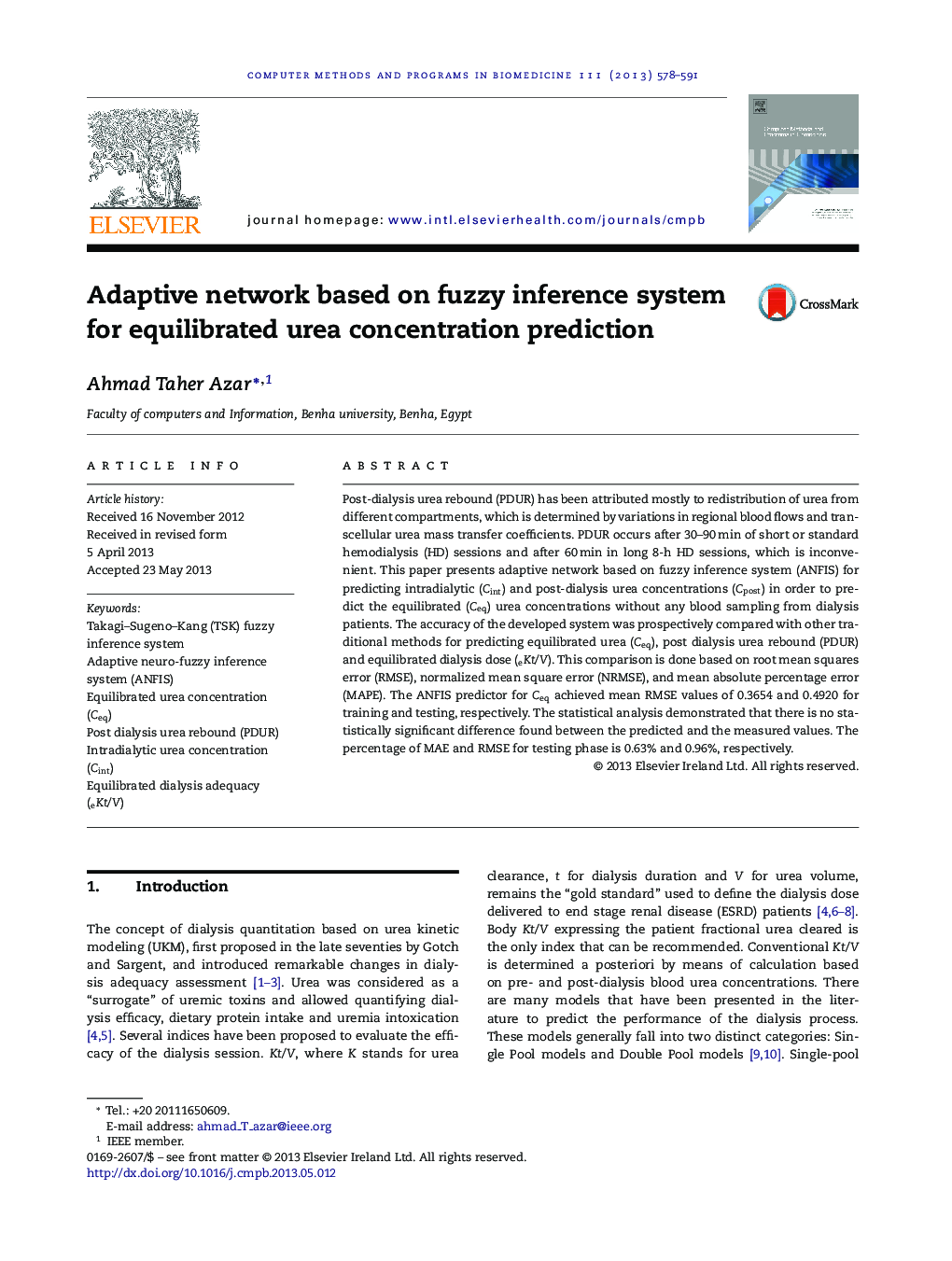| Article ID | Journal | Published Year | Pages | File Type |
|---|---|---|---|---|
| 10344541 | Computer Methods and Programs in Biomedicine | 2013 | 14 Pages |
Abstract
Post-dialysis urea rebound (PDUR) has been attributed mostly to redistribution of urea from different compartments, which is determined by variations in regional blood flows and transcellular urea mass transfer coefficients. PDUR occurs after 30-90Â min of short or standard hemodialysis (HD) sessions and after 60Â min in long 8-h HD sessions, which is inconvenient. This paper presents adaptive network based on fuzzy inference system (ANFIS) for predicting intradialytic (Cint) and post-dialysis urea concentrations (Cpost) in order to predict the equilibrated (Ceq) urea concentrations without any blood sampling from dialysis patients. The accuracy of the developed system was prospectively compared with other traditional methods for predicting equilibrated urea (Ceq), post dialysis urea rebound (PDUR) and equilibrated dialysis dose (eKt/V). This comparison is done based on root mean squares error (RMSE), normalized mean square error (NRMSE), and mean absolute percentage error (MAPE). The ANFIS predictor for Ceq achieved mean RMSE values of 0.3654 and 0.4920 for training and testing, respectively. The statistical analysis demonstrated that there is no statistically significant difference found between the predicted and the measured values. The percentage of MAE and RMSE for testing phase is 0.63% and 0.96%, respectively.
Related Topics
Physical Sciences and Engineering
Computer Science
Computer Science (General)
Authors
Ahmad Taher Azar,
